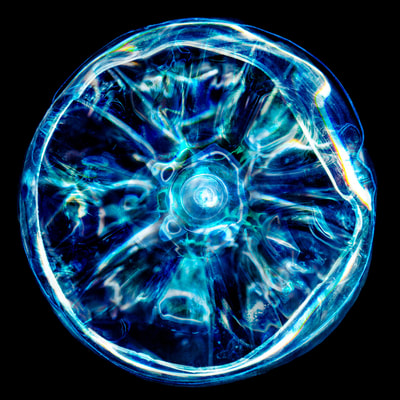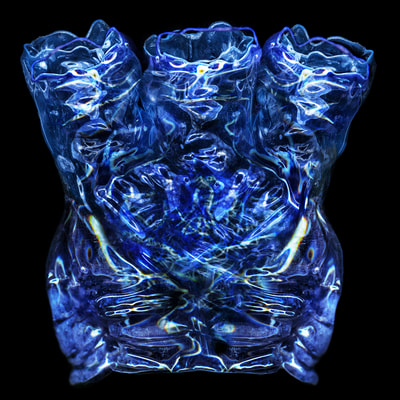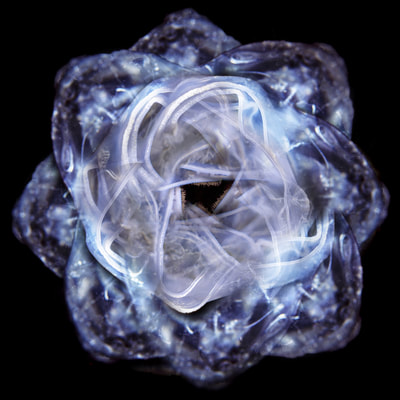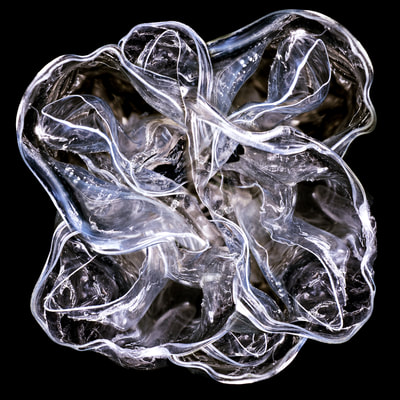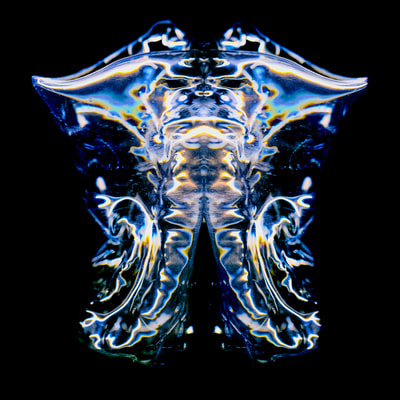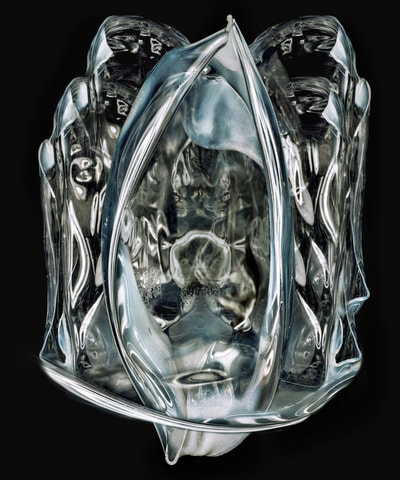Plastisphere
The term Plastisphere was created to reference the ecosystem of microbial organisms that form on floating plastic. These drifting habitats have the potential to host dangerous pathogens and leach toxic chemicals into their aquatic environments.
Over the years my work has utilized ephemeral materials and organic forms to reference the cycle of life while my newest series explores the antithesis of the cycle of life. Plastic is engineered to last forever and the overabundance of single-use plastics has created a ceaseless tidal wave of trash. Plastic pollution has become a global epidemic with over 8 million metric tons entering the world’s oceans every year killing millions of marine creatures.
Scientists recently discovered that plankton has begun ingesting plastic thereby introducing it into our own food chain through bioaccumulation. Phytoplankton is the base of the marine food chain and it is one of Earth’s most critical organisms responsible for producing half of the world’s oxygen. Images of these unusual microscopic creatures with their exquisite glass-like anatomy fascinated my curiosity and led me to manipulate discarded plastic to try and emulate their delicate translucent structures.
A variety of plastic bottles were collected, cut and melted to transform the vessel into a more organic shape. The resulting pieces were shot on a black background with a ring light to emulate the look of Darkfield Microscopy of phytoplankton specimens. The vivid colors presented in the Plastisphere series evoke the bioluminescent characteristics displayed by many species of dinoflagellates. With these images, it is my objective to engage and captivate the viewer with the delicate sculptural qualities that plastics can exhibit while raising awareness of the devastating effect plastic is having on our environment.
Over the years my work has utilized ephemeral materials and organic forms to reference the cycle of life while my newest series explores the antithesis of the cycle of life. Plastic is engineered to last forever and the overabundance of single-use plastics has created a ceaseless tidal wave of trash. Plastic pollution has become a global epidemic with over 8 million metric tons entering the world’s oceans every year killing millions of marine creatures.
Scientists recently discovered that plankton has begun ingesting plastic thereby introducing it into our own food chain through bioaccumulation. Phytoplankton is the base of the marine food chain and it is one of Earth’s most critical organisms responsible for producing half of the world’s oxygen. Images of these unusual microscopic creatures with their exquisite glass-like anatomy fascinated my curiosity and led me to manipulate discarded plastic to try and emulate their delicate translucent structures.
A variety of plastic bottles were collected, cut and melted to transform the vessel into a more organic shape. The resulting pieces were shot on a black background with a ring light to emulate the look of Darkfield Microscopy of phytoplankton specimens. The vivid colors presented in the Plastisphere series evoke the bioluminescent characteristics displayed by many species of dinoflagellates. With these images, it is my objective to engage and captivate the viewer with the delicate sculptural qualities that plastics can exhibit while raising awareness of the devastating effect plastic is having on our environment.
